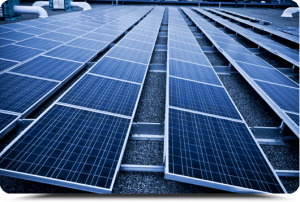 With Trump’s 30 percent tariff on foreign solar panels scheduled to last four years from February (decreasing by 5 percent per year), how is the U.S. solar industry faring so far?
With Trump’s 30 percent tariff on foreign solar panels scheduled to last four years from February (decreasing by 5 percent per year), how is the U.S. solar industry faring so far?
First, the good news. As E&E News covered [pay-walled], the Solar Energy Industries Association reported installations of 2.5 gigawatts in the first quarter of 2018, a 13 percent increase over the same period last year.
And due to the tariffs, firms have announced $1 billion in new spending plans to build or expand U.S. solar panel factories to take advantage of the tax on imports.
Overall, the U.S. solar industry employs more than 250,000 people, or roughly three times more than the coal industry, with 40 percent of those workers in installation and 20 percent in manufacturing, per the U.S. Energy Information Administration.
But that’s where the good news stops.
The positive numbers for the first part of this year are in fact the result of most installers delaying their 2017 projects until the tariffs were announced. As E&E News noted, modules for installations that came online this year were ordered prior to the tariffs.
Meanwhile, the tariffs have caused U.S. solar companies to cancel or freeze investments totaling more than $2.5 billion in large installation projects, which will cost thousands of jobs and more than offset any economic gains from domestic investment, per Reuters.
Specifically, the negative impact may be felt the most in the Southeast U.S., where the economics of solar were already borderline, according to MJ Shiao at the Wood Mackenzie consulting firm.
But the long-term trends may not be so bleak. Globally, China cut its subsidies and incentives for solar panels in May, presumably in response to the U.S. tariffs. As a result of that policy shift and the decreased deployment in the U.S., global prices have fallen, possibly as much as much as 35 percent.
As a result, the industry has seen record-low power purchase agreements with recent installations. For example, the Central Arizona Project, a municipal water utility, signed a $24.99-per-megawatt-hour contract with AZ Solar 1 earlier this month, which Greentech Media called the cheapest solar contract ever signed. And NV Energy, Nevada’s main utility, announced a deal for a $23.76-per-MWh contract with Eagle Shadow Mountain’s 300-megawatt development.
So the short-term results are mixed and likely to get worse. But as both the tariffs and prices decline, the U.S. industry may hopefully soon find its way out of the temporary hole created by the tariff policy.


